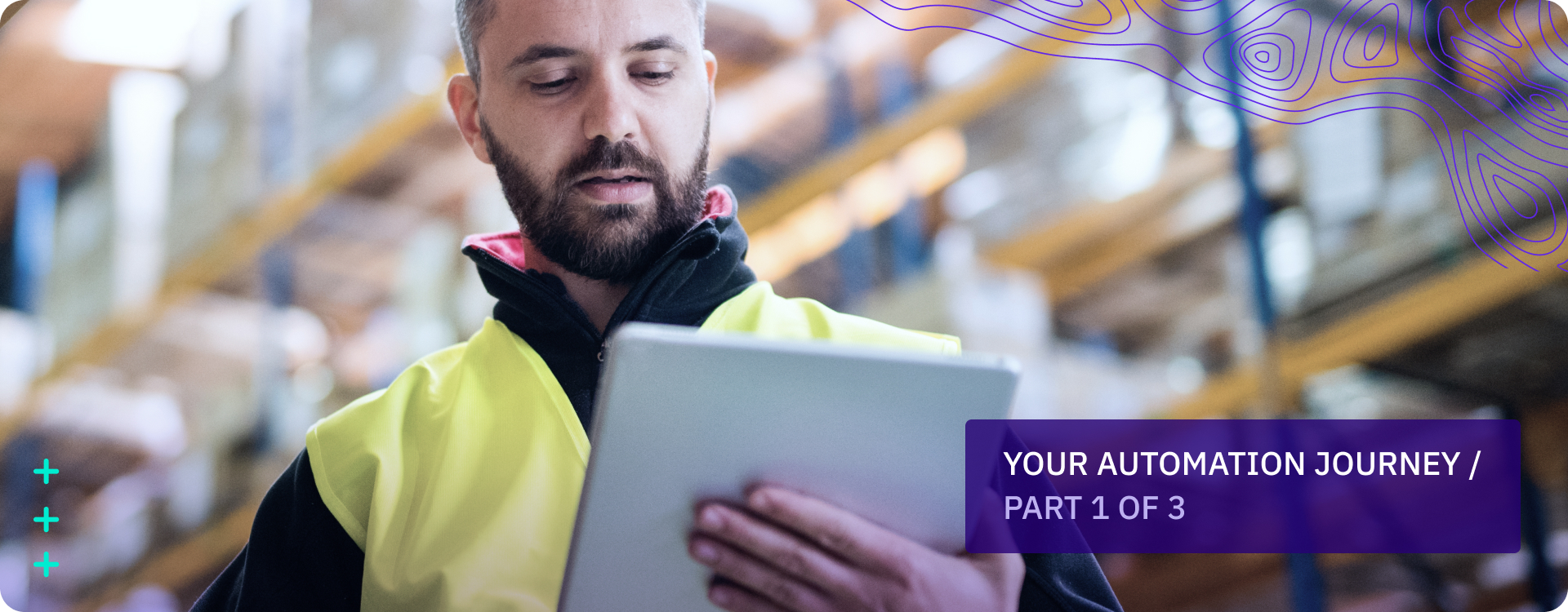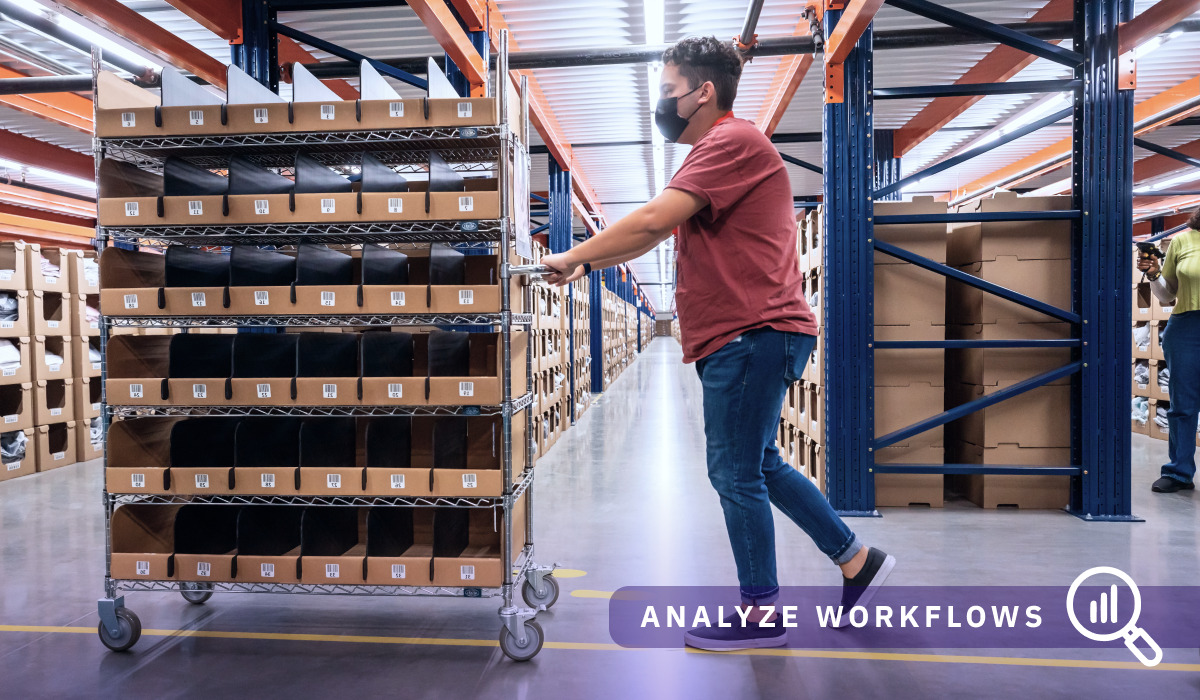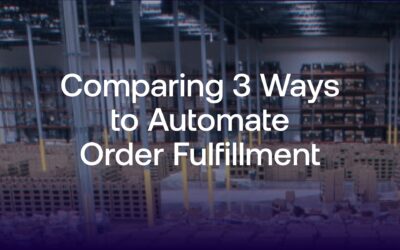Warehouse Automation: Assessing Your Warehouse Operations and Mapping Your Route to Success

March 1, 2024
As you look to streamline operations and boost efficiency by implementing or scaling mobile automation across your network, you may be wondering where to start.
We recommend starting with a warehouse automation assessment of your current warehouse operations and processes.
With careful planning, clarity on your business requirements and operational goals, and the right automation partner, your warehouse will quickly achieve the benefits of increased productivity and reduced operational costs, improved inventory management, and better use of warehouse space that mobile automation, such as autonomous mobile robots (AMRs), can provide.
In this blog series, we will take a look at the steps needed to ensure automation implementation, adoption, and success—so your operation can achieve its goals and continue to grow.
Embarking on Your Warehouse Automation Assessment Journey
As e-commerce and logistics companies face ongoing labor scarcity and the need for rapid order fulfillment, businesses must now embrace warehouse automation as an imperative, not an alternative. With more than 85% of supply chain leaders in a 2023 survey¹ planning to implement some form of automation within 12 months, there is a recognized need for the benefits that warehouse automation provides. However, not everyone is experienced or prepared for automation, with 70% of companies in the survey having never deployed an autonomous mobile robot.
Automation technology and purchase options have advanced to offer lower capital, easy-to-implement automation that can quickly have an impact. However, with any change to the status quo, there will always be inherent risk. With careful planning, a well-thought-out warehouse automation strategy, and the right automation partner, your warehouse will quickly achieve the benefits of increased productivity and reduced operational costs that mobile automation solutions can provide, improving warehouse efficiency and operational efficiency for both human workers and robots working together.
Step 1: Assess Your Warehouse Automation Readiness
Internal Assessment: A Fundamental First Step to Investing in Warehouse Automation Systems and Solutions
The better you understand your operational warehouse workflow, the easier it will be to identify processes that will benefit the most from automation and provide the most impact. Internally assessing your current operations should be a comprehensive effort, evaluating all aspects of material movement and inventory management will highlight inefficiencies and pain points that are slowing down workflow and impacting the bottom line. By taking this important first step, you will reduce costly mistakes and maximize the benefits of automation, choosing the right warehouse automation systems, software, and equipment, setting your business up for long-term success and scalable growth in a constantly changing and highly competitive landscape.
A formal warehouse automation assessment ties together warehouse operations, warehouse management systems (WMS), inventory control, and material handling processes so you can prioritize the right automation solution.
Start with data collection from your WMS and warehouse operations
Gathering relevant data that accurately depicts your operations will lay the foundation for effective analysis and provide quantitative examples of current outcomes and possible constraints.

Examples of meaningful data include:
- Order profile: Single vs. multi-unit orders, order volume, and order lines (how many distinct SKUs on average make up an order), particularly during peak season
- Inventory profiles: Stock keeping unit (SKU) counts, categories, and velocities, and inventory turnover rates, along with inventory accuracy and inventory tracking metrics
- Warehouse layout: How does work flow through the existing infrastructure, what equipment restrictions do you have in terms of zone access? How much volume is flowing through each zone? Where are there constraints on warehouse space and material handling equipment, such as conveyor belts or automated storage locations?
- Efficiency metrics: Throughput, order accuracy, and on-time shipping percentage (%) as well as the impact of manual labor and repetitive tasks on these KPIs
- Current order picking method: Zone picking (or “pick and pass” picking), batch or multi-order picking, wave picking, or cluster picking
Where possible, use software and sensors that provide real-time data from your automated systems and manual processes so you can build a clear baseline before selecting a warehouse automation solution.
Analyze your current warehouse processes and material handling workflow
Review your end-to-end processes from induction to pack-out, identifying inefficiencies for maximum automation impact.

Labor utilization and availability: Measure your team’s value-added versus non-value-added activities and their impact on productivity. How are the non-value-added activities (e.g. travel, rework, or setup) impacting your achieved productivity? Which tasks are good candidates for process automation using robots, conveyor systems, or other automated systems, so that warehouse employees can focus on higher-value work?
Examining workflow: Where are your bottlenecks? What are the activities required and are they keeping up with your ideal throughput and productivity goals? Are there constraints related to your warehouse management system, inventory control, or material handling equipment that slow down fulfillment? Could an automated warehouse system or automated storage and retrieval solution alleviate those bottlenecks?
Document Top Pain Points in Warehouse Efficiency and Operational Costs
Identify areas in your operations that cause inefficiencies and breakdowns in the process. Evaluate the data and workflow analysis to call attention to bottlenecks and decreases in productivity that increase operational costs and limit warehouse optimization.

Quantify the cost of errors: Determine and quantify order fulfillment errors and cost of these errors to your operation. Ask yourself: How easy is it to onboard new people to your processes? Are there any places, people, or products where errors are occurring more frequently? Does your system support quality assurance at every step of the process? Where is there room for error, and what is making it easy for users to create errors? How do these issues impact inventory accuracy, inventory control, and the performance of your warehouse management system?
Prioritize the impact of inefficiencies: Aligning your data and workflow analysis and ranking areas of improvement will help you to determine the right type of automation for processes that are hindering performance. Look for things like: non-value-added travel time, increased picking time, longer cycle times, safety issues, and tasks that require increased labor to complete. Also consider where robotic systems, automated conveyors, or automated storage solutions could reduce manual labor and repetitive tasks for warehouse workers, improving both safety and efficiency.
Identify and prioritize potential wins: Estimate the cost of downtime and inefficiencies to help prioritize the areas that will have the most impact and deliver a quick return on investment (ROI). Leverage current allocated labor, cost per full time employee (FTE), and labor utilization as inputs. For each high-impact area, outline the type of warehouse automation solution or system that could help, such as mobile robotics, conveyor systems, automated sortation systems, or AS/RS.
Why Pause to Assess Before Choosing a Warehouse Automation Solution?
Thoroughly assessing your current warehouse operations will enable you to make informed decisions about which processes to automate and which automation solution will have the most impact on your business. Instead of jumping directly to a specific piece of automation equipment, a structured warehouse automation assessment helps you choose the right combination of warehouse automation technology, software, and services for your environment. This assessment will better equip you for discussions with possible automation partners, supporting the need for automation with your internal stakeholders, and demonstrate a need for investment.
It is also important to consider not only where your business is now, but where you want to be. As you assess your current operations, consider that this will be an ongoing effort as your business grows and technology continues to advance. The more you understand the details of your warehouse, the better your automation strategy and ultimately your outcomes will be.
Finding a “True” Automation Partner for Warehouse Automation Systems and Technology
Choosing the right partner is crucial for automation success. Going beyond supplying automation, a true automation partner understands your operations as well as you do: identifying areas for improvement, working with you on solutions that support your areas for improvement, validating that the solutions work, recommending growth areas, and ultimately delivering results. The right partner brings experience with warehouse management systems, automated storage, conveyor systems, robotics, and other warehouse automation technologies, and can help you balance manual labor and automated systems in a way that works for your warehouse workers. In this blog series, we will explore the process of establishing your automation strategy and connecting with a partner who can help you achieve your objectives.
Going beyond supplying automation, a true automation partner
understands your operations as well as you do.
Onward Robotics is a full-service robotic automation partner, providing the latest in mobile robotic technology and working with you and your team to bring technology and people together for continuous and fast fulfillment. Check out our Meet Me® solution, and contact us today to learn how we can help move your fulfillment onward.
Sources:
- “Warehouse Automation: The Drivers, the Barriers, and the Trends for 2023” · Supply Chain Brain, July 2023


